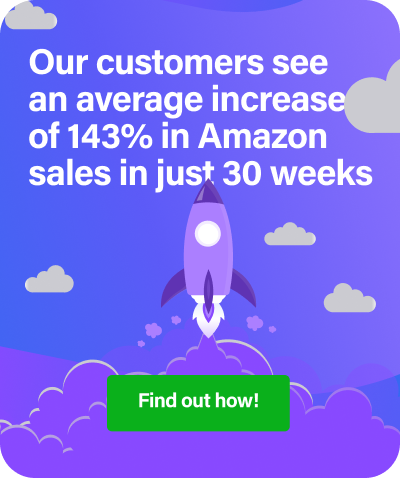If there’s one issue that plagues all online sellers, it’s cart abandonment. As the ecommerce market becomes increasingly saturated, online businesses are becoming all-too-familiar with the concept: prospective customers add items to their cart but exit the site without ever making a purchase.
A staggering 75.6% of all ecommerce shopping carts are abandoned, which has many online sellers questioning the success of their e-tail strategy. Imagine 75 out of 100 customers who walk into a brick-and-mortar store, picked up an item, brought it to the register, but never complete their purchase.
Not only would this be alarming, but it’s also highly unlikely. Sales conversion rates for in-store commerce is a whopping seven times higher than ecommerce.
What motivates cart abandonment? In 2017, the Baymard Institute found some of the most popular reasons online shoppers abandon the checkout process to be high shipping costs, a complicated checkout process, or even lack of trust for their credit card information.
The largest culprit of abandonment, however, is the 58.6% of consumers who fall into the “just browsing” segment. According to the Baymard Institute, “Many users will be doing window shopping, price comparison, saving items for later, exploring gift options, etc. These are largely unavoidable cart and checkout abandonments.”
Cart abandonment is a massive problem for many business owners, but it’s also one that shouldn’t be avoided. While you may think that, as a seller on Amazon, there is little you can do to remedy this problem, think again.
The following four tips are simple solutions you can integrate on your Amazon product page to reduce your business’s cart abandonment rate.
1. Provide Accurate and Specific Product Descriptions
While this might seem obvious, one of the main reasons Amazon shoppers abandon items in their cart is uncertainty about the product. In many circumstances, Amazon sellers fail to include a valuable description about their item, if they even choose to include a one at all.
Because your customers are shopping virtually and can’t actually see the product they’re considering, it’s your responsibility as the seller to provide as much useful information as possible. Your product description should include information like materials, dimensions or weight, and popular uses for the product.
This gives consumers a better understanding of the product they are considering purchasing. It’s crucial that your product descriptions equally balance both features and benefits. Be sure to describe the value your product provides in order to show the consumer how it benefits them personally, rather than just listing out features.
What motivates a consumer to complete a purchase is knowing the item will add value to their life, so be sure to convince them within a robust product description.
2. Offer Free Shipping
With over 100 million Amazon Prime members worldwide, most Amazon shoppers expect and prefer free shipping on their orders. Nothing scares off an Amazon shopper faster than the idea of having to pay shipping costs.
It’s likely that your customer will abandon your product to seek a competitor’s substitute that offers free shipping. Deciding whether or not to offer free shipping can be a tricky decision, but one that’s worth considering. If it means raising your product prices to accommodate shipping costs, don’t sweat it.
Studies suggest that consumers are willing to spend more on goods that offer free shipping. In fact, when it comes to converting customers, free shipping plays a critical role: it’s been reported that over 60% of consumers would have not made their most recent online purchase if they had not received free shipping.
While the concept of free shipping is often debated among Amazon sellers (you can check out the many posts on the Amazon seller forum for evidence) most sellers agree: they’ve found that offering free shipping on their products has positively impacted their sales.
3. Utilise Vendor Powered Coupons
If you’re an individual seller with a Pro Merchant account, a professional seller or a vendor, you can utilise Amazon’s built-in promotion tools. Vendor Powered Coupons, or VPCs, appear as digital coupons within ad units.
Like physical coupons, VPCs allow Amazon customers to get a dollar amount or percentage off the regular price of the product. Not only do VPCs improve a product’s visibility and click-through rate, but have long been a trusted tactic for boosting conversion rates.
In fact, 57% of US online shoppers who used a coupon code said that if they had not received the discount, they would not have bought the item(s). According to the principle of scarcity, it’s normal social behaviour for consumers to like something more when there is less of it to go around or if it’s only available for a short period of time.
Utilising sales promotions, VPCs in this case, create urgency and use a compelling call-to-action that motivate customers to complete a transaction with greater immediacy.
4. Engage With Customers
Customer service and engaging with prospective customers should always be your top priority. It’s a crucial component of customer retention as well as converting leads to sales. Amazon allows customers to ask questions directly on the product page, which a great way to connect with customers.
As a seller, it’s your responsibility to answer quickly and accurately. In many cases, all that’s needed to convert a customer from “just browsing” to completing a transaction is providing a short response to any uncertainties they might have.
As Amazon advises to its sellers, “Providing timely, high-quality responses to buyer inquiries is an important factor in buyer satisfaction”.
Keep in mind that Amazon measures and reports a seller’s average response time, so it’s best to respond to all inquiries in less than 24 hours. Not only will this reflect well on your seller profile page, but will also shorten the time-to-purchase and risk of a customer forgetting about your product.
While cart abandonment is a major issue facing ecommerce businesses today, a bit of strategic thinking can reduce its negative impact on your bottom line.



